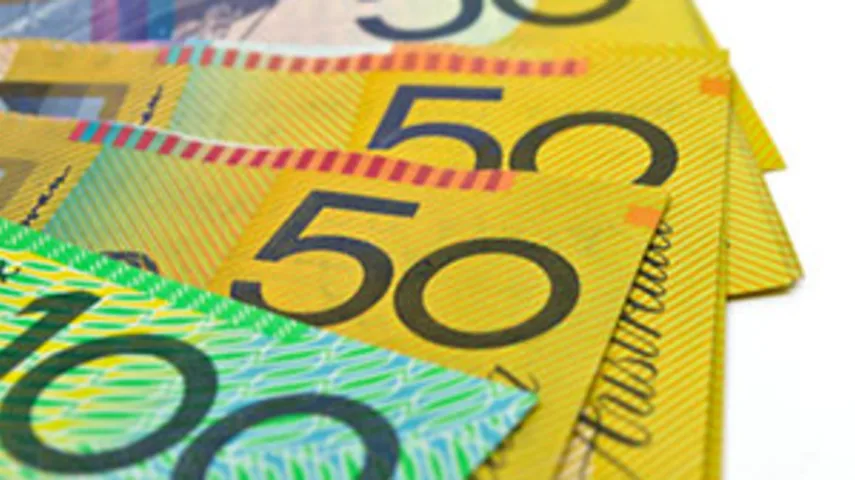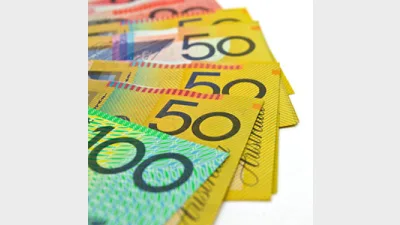Large cap Australian equities - a recap of 2011



In this excerpt from Lonsec’s Australian Equities Large Cap Sector review, Lin Ngin writes the last 12 months have seen unusual trends emerge in the Australian equities large cap sector.
In the 2011 review, fund managers reported difficult trading conditions, with few institutional mandates being awarded and retail fund flows being generally flat.
Conventional wisdom would suggest that smaller boutique managers are most at risk during market downturns.
While this may potentially still be true for the wider market (of the large cap Australian equity managers surveyed by Lonsec), it is the larger managers that have been generally observed managing heightened business risk.
Specifically, some of the larger managers rated by Lonsec are taking action such as reviewing operations, cutting staff, and engaging in corporate activity.
Lonsec’s smaller boutique managers have generally exhibited a high level of business stability and resilience in the face of declining funds under management.
That said, Lonsec has generally rated only one genuine boutique firm (Integrity).
The most prevalent form of boutique manager rated by Lonsec is the model where a boutique is backed by an institutional parent or some other supporter.
At the day-to-day level, this model allows boutique managers to focus on investment management and still have access to resources and non-investment related infrastructure and marketing support from a larger organisation.
At a financial level, it often allows the boutique to have access to the balance sheet (or financial support) of a parent should it be necessary.
At the time of this review, Lonsec has no immediate business risk concerns regarding any of the boutique managers currently on the ‘recommended’ list.
That said, it should be noted that this business model offers little protection from when the parent itself encounters difficulty.
Market environment
The Australian share market (as measured by the S&P/ASX 300 Accumulation Index) delivered a loss of 6.27 per cent for the 12-month period ending November 2011.
The market was weak for much of the year, with only three positive months. (Refer to Figure 1.)

The market was dominated by macro themes, particularly in terms of events offshore as investors sweated on the European sovereign debt crisis, looked for signs of a recovery in the US, and eyed China warily for evidence of a slowdown.
Managers found adding value from bottom-up stock picking difficult in this environment. Given the risk on/risk off macro nature of the market, fund managers with a more “top down” element to their process should be better equipped.
However, market timing remains an imprecise and elusive art, and many managers were caught out being “too early” in increasing the active risk in their portfolios.
Lonsec notes that managers who looked to “dip their toes in the water” by increasing active risk through media stocks – rather than consumer discretionary and resource stocks – were impacted by stock specific issues with the market’s largest media stock, News Corporation (UK phone hacking scandal).
In the past several years, a number of themes have dominated the market.
The two strongest themes were the performance of resources far outstripping industrials, and the outperformance of smaller cap stocks versus large cap stocks.
In the 12 months to November 2011, this relationship has been flipped on its head with the S&P/ASX300 Industrials Index far outstripping the S&P/ASX300 Resources Index.
Likewise, smaller cap stocks trailed larger cap names, with the S&P/ASX Small Ordinaries lagging the headline S&P/ASX300 Index. (Refer to Figure 2.)

As signalled in last year’s sector review, Australian companies remain in relatively good shape, having cut costs, recapitalised balance sheets and reduced levels of debt post the global financial crisis.
With an excess of capital on balance sheets, many companies looked to either return capital (via share buybacks) or deploy capital (through acquisitions).
The major off-market share buyback was BHP, which bought back $6 billion (4.4 per cent of its capital base) in 2011.
A large number of companies also undertook market capital management, including relatively small “growth” style companies such as JB Hi-Fi and Carsales.com.au.
Initial public offerings (IPOs) were relatively thin on the ground, except for small resource companies.
The last major non-resource IPOs were QR National and Myer – neither of which were popular with Australian fund managers at the time of floating.
The lack of new stocks to the market, coupled with the departure of large industrial stocks such as Fosters (acquired by SABMiller) naturally poses the question of whether the Australian market – which is already concentrated around the big four banks and BHP and Rio Tinto – has become too concentrated.
Lonsec takes the view that markets are cyclical. Many of the acquisitions of businesses and companies by private equity have been opportunistic due to prices being too cheap, and it is likely that when the cycle turns, these will be put back to market.
Fund performance
The peer group delivered an average excess return of 0.52 per cent (after fees) over the 12-month period to November 2011. Over the three-year period, the Lonsec peer group average excess return was +0.44 per cent per annum (after fees).
There was a large divergence between the top and bottom performing funds across the peer group, driven mainly by the respective performances of the value-style managers.
The value-style managers performed strongest as a group, with an average excess return of 1.58 per cent (after fees).
In contrast, the average excess return of the other style managers was negative.
The divergence between the top value fund and the worst value fund was extreme, however, with a gap of greater than 14 per cent. Lonsec also notes that the value managers were highly polarised as a group.
Investors Mutual and Perpetual had strong 12-month periods, whereas Perennial Value, Legg Mason, AXA and Zurich (ATI) were amongst the worst performers over the same period. Lonsec notes that the best performing stocks during the year were defensive stocks.
However, defensive stocks were relatively expensive during the year, which would make it difficult for a true to label value-style manager to buy defensive stocks.
That said, Lonsec’s quantitative style analysis of Investors Mutual and Perpetual indicates that both managers have remained true to label value managers.
Franking levels across the sector have been higher than normal. This has been driven by participation by many managers in some of the large buybacks that have occurred – in particular, the off-market buyback undertaken by BHP.
The BHP buyback was structured so investors received $40.9 in cash value per share. This value represented a 14 per cent discount to BHP’s volume-weighted average price for the preceding five days to 8 April 2011.
The $40.9 comprised a capital return of $0.28 and a fully franked dividend of $40.6.
The structure of this buyback meant that the tax benefits were extensive and resulted in particularly high franking levels for funds that participated.
Inflows and funds under management
Similarly to last year’s review, the trend towards low cost, passive alternatives in Australian equities continued in 2011, with retail fund inflows towards active strategies being relatively flat.
In addition, the increasing popularity of exchange traded funds and availability of separately managed accounts has created increased competition for the traditional managed fund or unitised investment product.
Portfolio positioning – market cap bias
The average market cap exposure of the peer group remained largely unchanged compared to the same period last year.
In 2011, there was a marginal reduction in the average exposure to top 50 stocks (large cap), with a corresponding increase in the average exposure to ex-100 stocks (small caps).
Compared to the benchmark, the average fund was underweight large cap stocks and overweight ex-300 stocks.
This part of the market may include dual listed stocks, hybrids, participation in placements and other corporate actions.
Cash levels stayed relatively consistent, with levels reported in the last sector review.
Consistency
The outperformance ratio is the number of months that a fund outperforms the benchmark over the period, expressed as a percentage of the total number of months over that period.
It is a measure of consistency, and when used in conjunction with excess return information for the same manager will indicate if returns are being generated through a small number of larger wins or a larger number of small wins.
On the measure of consistency of returns over the year to November 2011, six funds reported an outperformance ratio of 75 per cent including the:
- Perpetual Australian Share Fund
- Perpetual Concentrated Equity Fund
- Ironbark Karara Australian Share Fund
- Investors Mutual Industrial Share Fund
- Investors Mutual Australian Share fund, and
- the BT Imputation Fund.
Over the three-year period assessed, the Greencape Broadcap Fund was clearly the best performing fund based on consistency with an outperformance ratio of 72.2 per cent.
It was followed by the Perpetual Australian Share Fund (63.89 per cent) and the Legg Mason Australian Equity Value Trust (61.11 per cent).
The BlackRock Australian Share Fund reported an outperformance ratio of 25 per cent – meaning it was only able to generate outperformance in nine out of 36 months over the three-year period to November 2011.
Note: The above text is an excerpt from Lonsec’s Australian Equities Large Cap Sector Review, which was released in January 2012.
Lin Ngin is a senior investment analyst at Lonsec.
Recommended for you
In this episode of Relative Return Insider, host Keith Ford and AMP chief economist Shane Oliver unpack the RBA’s decision to keep the cash rate on hold in the face of rising inflation and whether the governor’s hawkish tone is a sign of things to come.
In this episode of Relative Return Insider, host Keith Ford and AMP chief economist Shane Oliver discuss the September quarter GDP figures, which show Australia’s economy regaining momentum.
In this new episode of The Manager Mix, host Laura Dew speaks to Haley Devine, head of wealth management at MaxCap Group, to delve into private credit and commercial real estate.
In this new episode of The Manager Mix, host Laura Dew speaks to Benjamin Leung, head of systematic investments at Macquarie Asset Management, to understand the use of systematic investments.







